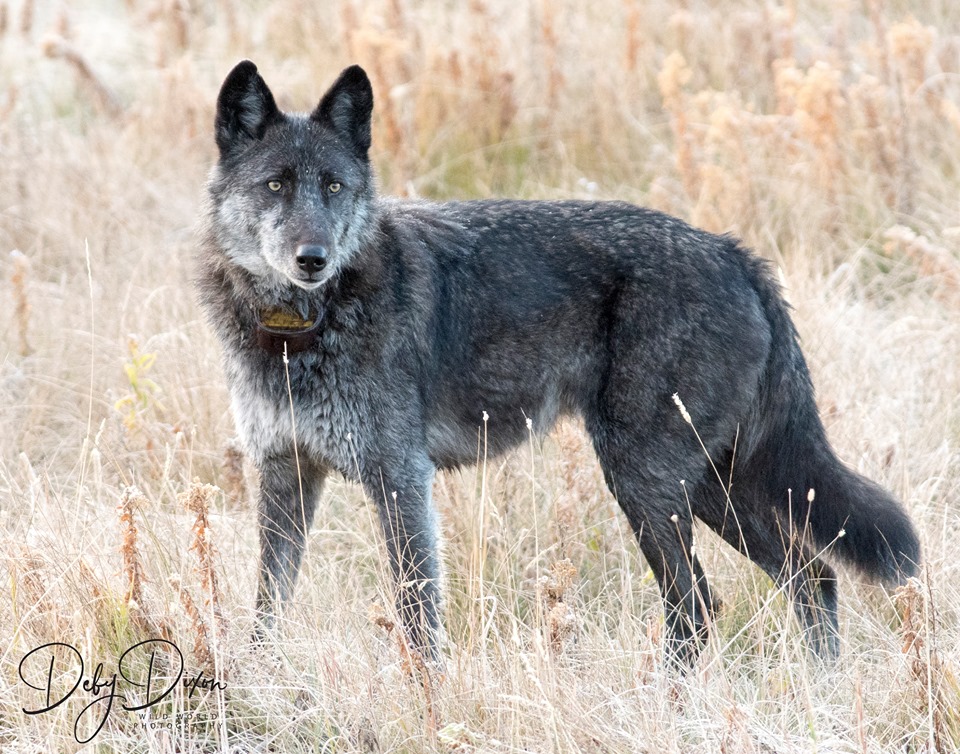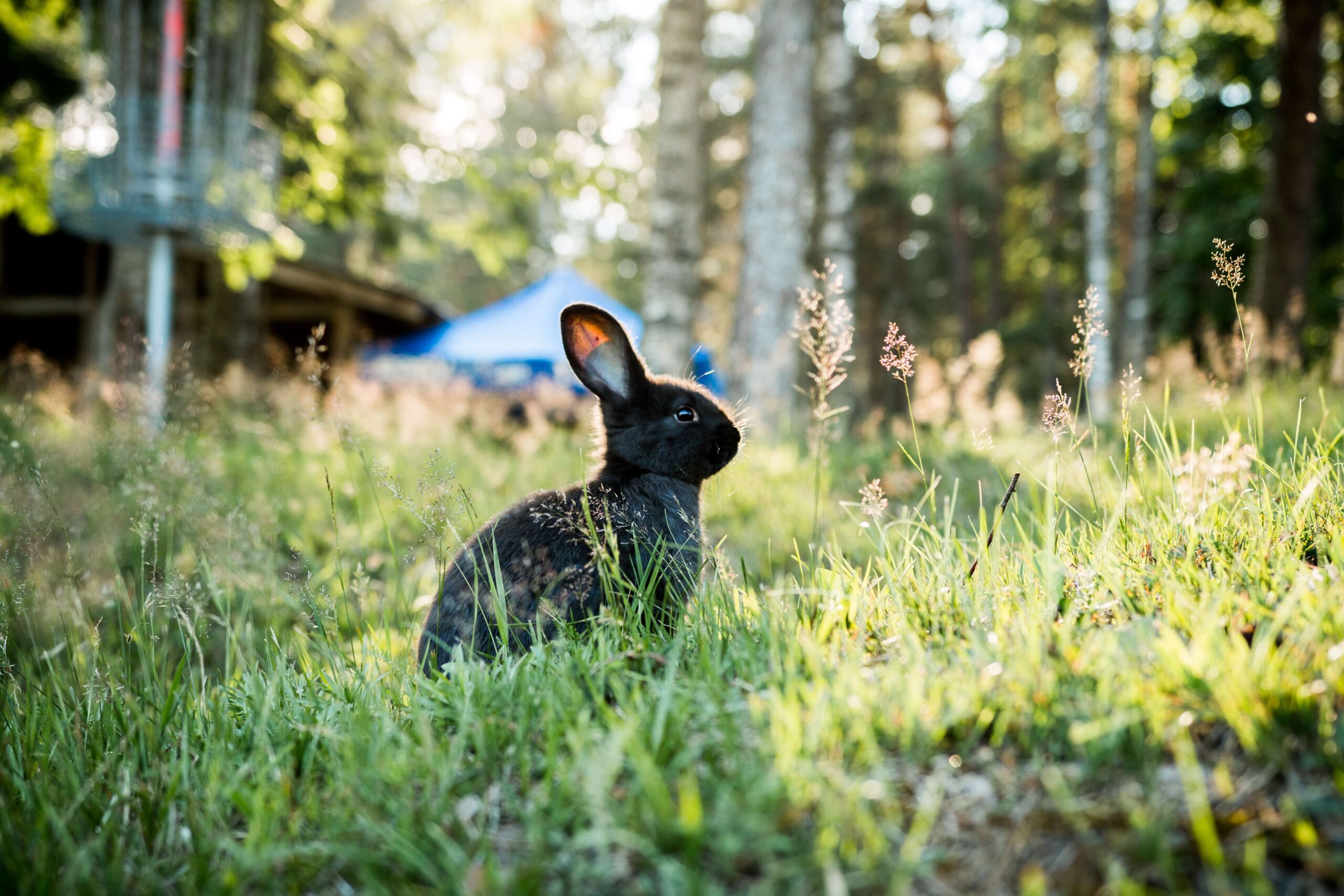
Coexistence
Learn more about the effectiveness of non-lethal methods and how the suffering can be ended for wildlife.
Coexistence & Wildlife
NON-LETHAL TECHNIQUES TO PROTECT LIVESTOCK FROM PREDATORS
There is no one size fits all when it comes to the use and effectiveness of non-lethal methods to prevent livestock losses to predators. Utilizing guard dogs, guard animals, human presence, fencing, fladry, lighting, scare devices, lambing sheds, night corrals, carcass and sick animal removal are nonlethal strategies being implemented. The site, topography, time of year, type and age of livestock and the predators are all critical factors. What has been found most successful is to integrate a variety of the non-lethal tools sometimes necessitating mixing it up over time.
As more land is lost to wildlife more conflicts with humans and with domesticated animals are certain to arise. The return of large predators has brought new challenges to livestock producers that they hadn’t faced in decades. Religiously incorporating non-lethal techniques into animal husbandry creates a win-win for livestock and for the wildlife.
From the perspective of modern society, there are two more reasons to propagate preventative measures: conservation (lethal control threatens many carnivore populations), and ethical arguments (moral reservation against the killing of predators and against livestock being exposed to pain and suffering) (Breitenmoser 2005). The use of traps and poisons are indiscriminate and non-selective in targeting just the offending individual. Both devices lead to much suffering. In the extirpation of wolves, other species were lost as a result, too. Aerial gunning of predators is costly. Retaliatory killing was the most important reason for the historic eradication of large carnivores in large areas (Breitenmoser 1998).
“Non-lethal controls were more effective than lethal methods in preventing carnivore predation on livestock. Two tests of non-lethal methods (fladry [a type of visual deterrent] against wolves and livestock guarding dogs against several species of predators) used the highest standard of evidence without bias and are therefore the most reliable methods of predator control known to date.”
So why is killing predators generally less effective at protecting livestock? It is a quick but temporary fix. Nature abhors a vacuum. Animals are territorial competing for limited resources. Removing predators opens a niche for other predators to move in. As long as the food source is easily available predation will continue. Food is a strong stimulus and reinforcer for learning. A lethal response to predation creates a vicious cycle. An attractant, as in a vulnerable domestic animal results in an easy attack, killing and/or then feeding on the animal by a predator. Destroying the predator, if it can even be determined for certain which one, opens that territory and that unforgettable food reward to other predators to do the same whether that be of the same pack, species, or other species, i.e. mountain lions, wolves, bears, coyotes, fox, raccoon, hawks, eagles, owls, etc. Larger predator species keep smaller, “lessor”, species, i.e. fox, raccoon, known as mesopredators, in check. Adrian Treves, a professor at University of Wisconsin and director of the Carnivore Coexistence Lab found in a 2016 analysis of lethal and non-lethal responses that two of the lethal measures actually lead to increased predation possibly because the smaller predators could therefore flourish. Simply put, wolves control coyotes and coyotes control fox populations. Wildlife, including predators, don’t live in isolation. Food does not come easy and often not without significant risk. In nature, many species take advantage of a kill. They fight over, chase, drive off, hang close, eventually hoping to get their turn at the carcass. Nothing goes to waste. From the grizzly down to the deer mouse.
Some predators will not bother livestock focusing instead on their native prey. Others of the same species may. Coyotes have been seen hunting rodents among the cattle neither paying any attention to the other. Donkeys have shown recognition of which canines were a threat ignoring the fox but don’t let a dog venture into the field. Some livestock producers have learned and respected these variances among predators. They have coexisted even with large predators such as wolves, accordingly. Montana ranchers in the Tom Miner Basin are one such example. They have witnessed, too, what happens when those wolves are destroyed. Well-accomplished stockman Joe Engelhart out of Canada says, “He values having a stable wolf pack in the area. As he sees it, random killing non-problem wolves could cause a splinter pack to form or could bring in new wolves that cause more problems.” Killing canine predators disrupts the pack. This has been found to be counterproductive resulting at times in increased predation on livestock. Without the key members in the pack or the mate of a bonded pair, obtaining easier prey becomes the requirement in order to survive or feed the young. Smaller fragmented packs are more likely to be the ones to go after livestock as they do not have the pack members to cooperatively hunt their bigger tougher natural prey. Removing mature individuals leaves young inexperienced animals to have to learn to hunt on their own. That can lead to trouble. Heavy persecution of coyotes has backfired resulting in larger litters and higher pup survivability. In nature, suitable habitat is the most limiting factor for prey species and prey limit the number of predators.
Here now is a closer look at some of the non-lethal techniques showing the most promise and against which predators:

While livestock mortality due to predators is small in comparison to other causes it can be significant to that livestock producer. Sheep losses to predators are higher than for cattle. So how effective are nonlethal techniques for sheep against say wolves and what about on large scale operations? A study published in the Journal of Mammalogy, February 2017, “Adaptive Use of Nonlethal Strategies for Minimizing Wolf-Sheep Conflict in Idaho” found, “Over the 7-year period, sheep depredation losses to wolves were 3.5 times higher in the Non-protected Area (NPA) than in the Protected Area (PA). Furthermore, no wolves were lethally controlled within the PA and sheep depredation losses to wolves were just 0.02% of the total number of sheep present, the lowest loss rate among sheep-grazing areas in wolf range statewide, whereas wolves were lethally controlled in the NPA. Our demonstration project provides evidence that proactive use of a variety of nonlethal techniques applied conditionally can help reduce depredation on large open-range operations.”
Other producers have put their focus on the livestock themselves. One is by reminding cattle they are herd animals and teaching them to herd up. Running triggers the predator response as they size up their prey in determining which are most vulnerable. Predators want to separate that animal out from the herd. The use of cowboys is nothing new. Range riders are a preventative non-lethal tool. Human presence is a very strong deterrent to predators. According to Joe Engelhart, “Cowboy have been doing it for a long time, but usually, they focus on predators, less on livestock. If they see a wolf or a bear, they try to chase it off or follow it, often try to kill it. But that does not work, because you end up leaving the livestock behind and they get stressed, and the wolf and grizzly bear are much sneakier than we are.” Engelhart is a stockman who developed the herd up technique in the foothills of Alberta’s Rocky Mountains, just North of the U.S. border. Each summer, Engelhart superintends about 6,500 head of cattle owned by 38 farms.” In a personal communication with Joe, he shared with Trap Free Montana not only does he have no livestock loss to predators, including grizzlies and wolves, but the cattle mortality rate is lessened, too. The cattle are overall much healthier. These cattle are less stressed. Relaxed cattle = happy healthy cattle. A formal study of his technique and its effectiveness is underway.
“Living with Carnivores: Boneyards, Bears and Wolves” is a documentary film about living with large carnivores. The story begins a decade ago in western Montana’s Blackfoot River Valley and explores how a rural agricultural community responded to the resurgence of grizzly bears and wolves. The film explores the thoughtful “can do” approach of Montana livestock producers who realized that the age old practice of dumping dead livestock onto “boneyards” was destined to spell trouble by attracting grizzly bears and wolves onto ranches resulting in poor outcomes for wildlife and livestock producers.
Grizzly experts say the best and only real way to eliminate the bears from chicken coops is to put up electrified fence. The bears quickly learn and move along.
Trash is reportedly the number one attractant to bears.
For additional resources on non-lethal techniques for livestock protection against predators:
- Non-lethal Solutions to Reduce Conflict
- Coexistence Among People, Livestock & Wolves
- Safeguarding Livestock From Mountain Lions
- Livestock and Wolves A Guide to Non-Lethal Tools and Methods to Reduce Conflict
- Non-lethal Techniques to Reduce Conflicts With Grizzly Bears
- Farmers and Ranchers Bear Smart

Take Action
Reach out to learn more and for ways to help with non-lethal methods.